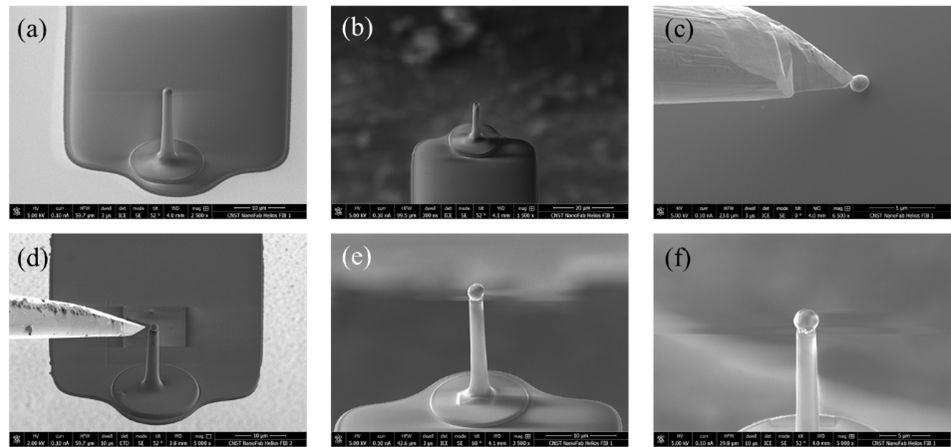Direct Ink Writing of ZnO for Additive Manufacturing: Interparticle Force Measurements via AFM
Summary
Our objective is to develop accurate Atomic Force Microscope (AFM) fluid cell techniques and colloidal probe fabrication procedures to quantify the nanoscale forces present between ceramic additive manufacturing (AM) feedstock precursor particles. Such methods could be utilized to further inform predictive modeling and other computational methods for the design and printing of complex ceramic AM components.

Description
The additive manufacturing (AM) of ceramic materials has tremendous potential in variety of applications (e.g., electronics, automotive, energy) but lags significantly behind metal and polymer AM processes in terms of data-driven predictive design and modeling capabilities. In order to facilitate the broad commercialization of ceramic AM materials our collaborators at NIST have identified several scientific barriers that must be overcome. One such barrier is the lack of standard feedstock precursors and a thorough understanding of how the nanoscale properties of feedstock materials affect the ability to model and/or predict 3D printing dynamics and the resultant quality of the final 3D-printed product. Toward this end we are developing Atomic Force Microscopy (AFM) techniques to quantify the interparticle forces of Zinc Oxide feedstocks as a means of understanding how particles interact in 3D-printed slurries with applicability to Direct Ink Writing (DIW) AM processes.
Initial efforts focused on developing fabrication methods of ZnO colloidal-tipped cantilever probes that could be employed in standard AFM force spectroscopy measurements. Approximately 1 micron sized spherical particles were attached to commercially available AFM probe tips via an SEM-FIB process shown below utilizing the NIST CNST Nanofabrication facility’s Helios NanoLab 660 Dual-Beam Scanning Electron Microscope.
Once the particle is seated and tacked to the AFM cantilever probe, spectroscopic force measurements utilizing the AFM can be conducted without the ZnO particle becoming detached from the cantilever during repeated contact with a ZnO countersurface. The AFM experiments are performed within a closed fluid cell environment containing the same chemical slurry solution as that used during DIW applications including water (the aqueous media), surfactant additives to prevent colloidal particle agglomeration, and binding agents that aid in post-processing sintering steps. By carefully monitoring the separation distance at which the attached ZnO particle begins to attractively interact with the countersurface (i.e., the “snap-in distance”) and the ultimate restorative force required to detach the particle from the countersurface (i.e., the “pull off force”) one can recreate the full interaction potential profile of the ZnO-ZnO system which can then, in turn, be used to inform discrete element modeling and rheological property simulations being conducted by others in the Ceramics AM group. As mentioned previously, better predictive models would aid greatly in the design and reproducibility of ceramic AM 3D-printed components. The AFM work discussed here is currently ongoing as part of an active collaboration with the Materials Structure and Data Group at NIST.
Contacts
-
(301) 975-5409

